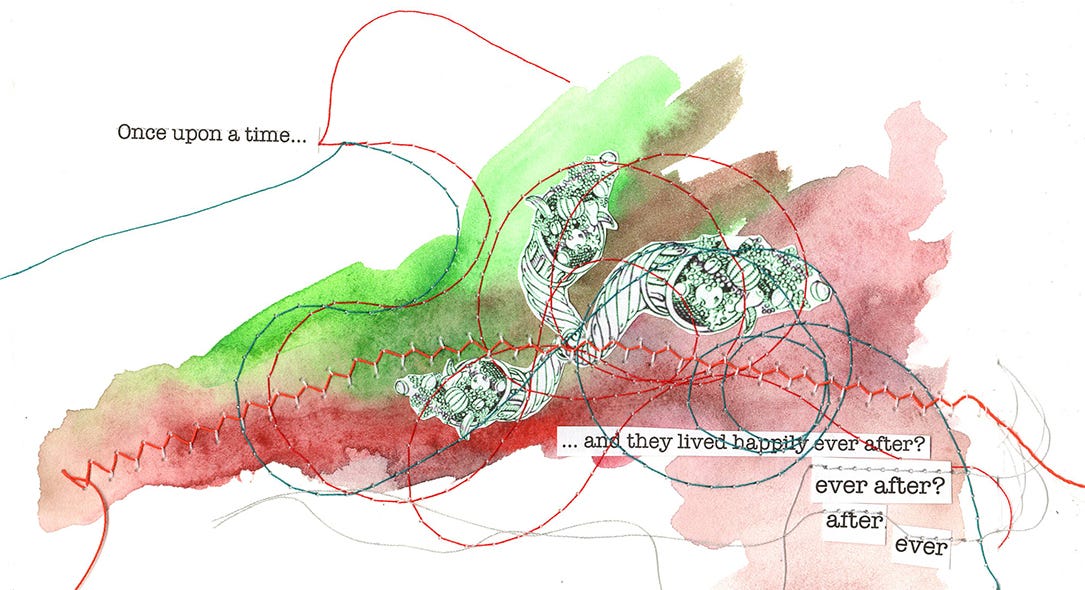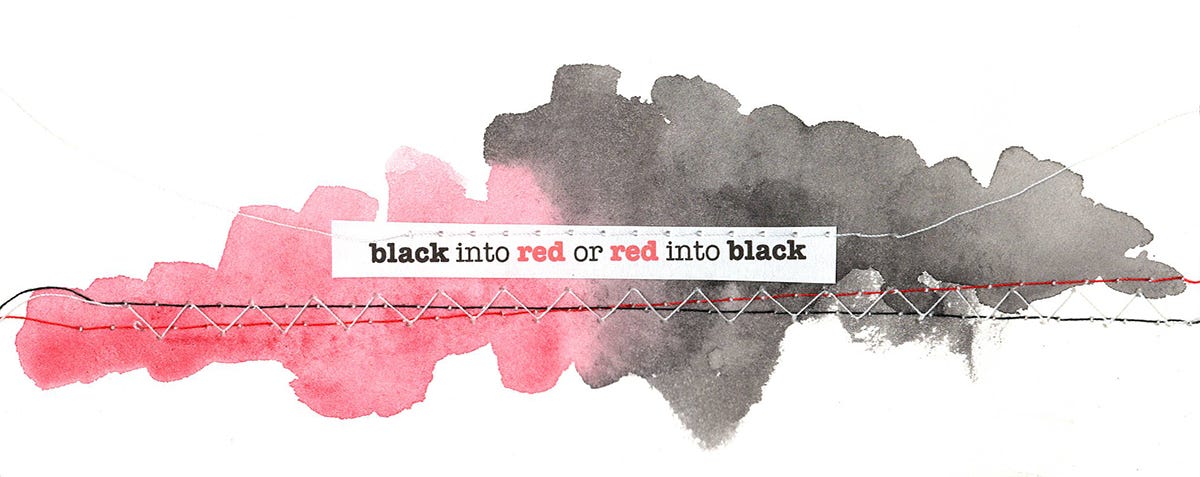Narratives on Thanksgiving & Regeneration
Unpacking the false narratives were told on Thanksgiving and Black Friday to rewrite a regenerative way of being
Welcome to my new subscribers! Some of you heard me speak at Design Activist for Regenerative Futures Fireside Chat, and others have found me through some of SubStack's new features. My long-time subscribers know that my posts have slowed this semester (as a professor I work in academic time). My close friends know this is in part because of a leave I have been on to reset and regenerate my own personal health. Whatever finds you here, welcome. As a design professor, I write to bridge the academic with the everyday, in hopes of moving our conversations from sustainable to regenerative practices - for ourselves, our communities, and our planet.
Pilgrims have greenwashed us
In the United States, we enter Thanksgiving Week. A holiday celebrated on the fourth Thursday of the month that has slowly crept to take over the entire week, kicking off the capitalist takeover of the “holiday season”. It’s a holiday built on the false narrative that Pilgrims came to the US, made some new friends, and happily shared a meal with the Indigenous peoples whose land they “discovered”, giving thanks for their differences and the ways the cultures helped each other survive through a tough harvest. This narrative has been taught for generations, whitewashing, stereotyping, glamourising, and inverting the real story to become a complete act of fiction. So much so that Wampanoag and Indigenous peoples across America mark the day instead as one of mourning. Some Wampanags, whose people play the part of the “Indians” in the story, consider helping and welcoming the Pilgrims in 1621 their “biggest mistake”. While the Pilgrims did arrive in the US, and the Wampangs did help them survive, they were not invited to the feast. What followed was not a happy time of friendship, growth, and a cornucopia of diversity, but rather one of colonization, death, and destruction, spreading disease, causing famine, and entrenching them to a life of servitude. The story of the first Thanksgiving that has been taught in schools and the mainstream media tells us the Pilgrims brought a better life by sharing tools, technologies, and more advanced inventions, while the natives taught them to live on the land. This story is told, and is in many ways sold to us, to keep the idea of white capitalism as a superior way of life going. In some ways, it might just be the original greenwashing campaign.
Indigenous peoples are some of the original regenerative designers. Many indigenous cultures are centered around cultivating the lands and living with nature; knowing that they can not extract all of its resources without replacing them. Gratitude is expressed for what the earth provides us knowing we must be caretakers, not land-takers. The false narrative of Pilgrims as superiors, sharing their way of life and settling in to create these great United States keeps people living in the false reality that we too can continue to extract resources, dominate lands, and live without a care for where our trash might end up or the harms it may bring.
2-for-1 deal designed to keep the false narratives going
And what could be better than just one holiday built on false claims to keep gluttony and capitalism going? We have a 2-for-1 special in the States, where the day after this idealized meal, we celebrate Black Friday! Not surprisingly, the busiest shopping day of the year is also based on a lie. We’re told the story that while many retailers operated “in the red” (at a profit loss) but when holiday shopping begins the day after Thanksgiving, profits roll in and they suddenly operate “in the black” referring to ink colors once used in ledger books.1 By this narrative we are sold the idea that we are actually helping retailers - we should want to bring them out of the red and into the black, we should want to help the economy, and what better way to do it than by buying Christmas gifts on sale! In reality, “black Friday” was a term used by the Philadelphia police in the early 1960s to describe traffic and congestion that occurred when tourists and shoppers came to the city for an annual football game the weekend after Thanksgiving. In an attempt to give a more positive spin to the phrase, the story of retail glory was introduced in the 1980s by retailers themselves to encourage… more shopping.
These back-to-back capitalist narratives keep the “take, make, waste” model going, where we extract resources at record levels, often at the expense of underpaid workers, and consume more than we need (in food and goods), adding pollution and trash to the landscape. The blinking ads for TVs, blenders, heated blankets, and spinning toys distract us from stopping to think deeper about our purchases, our time, and our well-being. Because we need to act now, buy now, if we don’t we will miss the deal!
But here’s the thing… If we don’t slow down and act on climate change, act on the cultural and spiritual deficits in our societies, we will miss the best deal of all - which is living a healthy life on this planet.
Designing a new narrative
In recent years, there have been attempts at alternate ways of spending this week. “Small Business Saturday” keeps capitalism alive while supporting local businesses (and also sponsored by American Express). “Buy Nothing Day”, goes a step further to buy nothing at all. Native American Heritage Day is the technical civil holiday for the day after Thanksgiving, an event signed into law by George W Bush in 2008. Here in the San Francisco Bay Area, the Ohlone People will hold their annual protest of Black Friday on their ancestral shell mounds burial site where a mall now stands. And while these are important steps, we must not forget that these actions need to be more than one day. They are all simply a first step in a journey to invert the systems of power and live a different life.
What does this mean for designers, makers, and creatives? In part, we can look at what it is we design, make, and create. Which is all part of its own narrative. What are the stories we tell ourselves? What are the stories our work tells? How do we live those narratives or invert those narratives? How can we live and work in ways that change the narrative? Not only the narrative of Thanksgiving and shopping, but also the narrative about sustaining our planet. About regenerating ourselves emotionally and spiritually instead of with the hottest deals this season. About restoring nature and learning from indigenous practices instead of extractive economies.
“If you want power, control the narrative in other people’s heads. If you seek happiness, control the narrative in your own head.” - Johnny Uzan.
In full disclosure, my family will celebrate Thanksgiving in our own ways. And while I won’t be hitting the malls or staying up late to click on deals, in all likelihood, I will buy something on Friday. This is also to say that our ways of doing things need not be completely abandoned. It’s part of the paradox that students often ask - how can we create a new paradigm while also living in our current one? We know from behavior change that sometimes kicking habits cold turkey can backfire. (sorry, couldn’t resist the pun.) It’s about small changes that can fractal into larger changes. It’s about making personal change, communal change, and planetary change in alignment with one another. So as I celebrate this “holiday”, I’m using the time this week to reflect on what I am grateful for. Not in a “here’s what I’ll share as we go around the table before we eat” way, but in a deeper, more meaningful way. From that gratitude, I’ll consider changes I can make to live more aligned with those that regenerate me.
The stories we tell ourselves, our children, and our communities are important. Whether it's the story of our own personal worth and power, or the story of how we can create change when up against all odds. Regenerative conversations was started as a way to shift the conversation from sustainable to regenerative design. Our world is not sustainable as we use far more than we restore. Instead, we must find ways to regenerate ourselves, our communities, and our planet - resorting, rejuvenating, and renourishing along the way. I invite you to consider your own story and those you’ve been told. How can we write a new narrative on regenerative culture this Thanksgiving?
I’m sure more could be written about the color symbolism of black and red. Red, in many indigenous cultures, represents the earth. And of course, “the red man” is what many of these first settlers named the indigenous people, so there’s more in the symbolism behind erasing the red with black.







